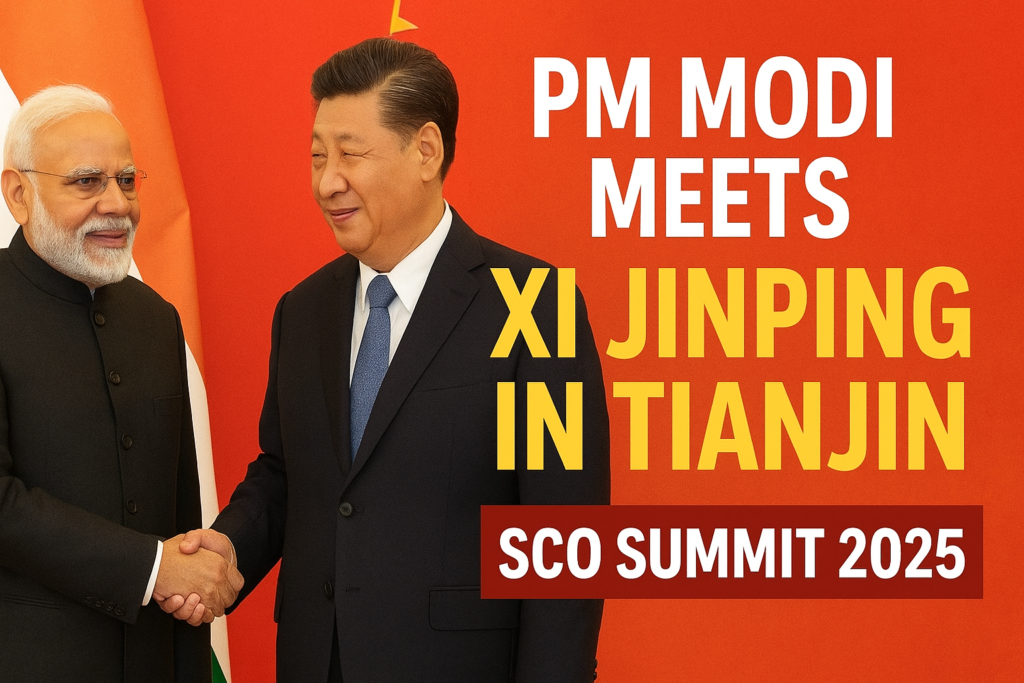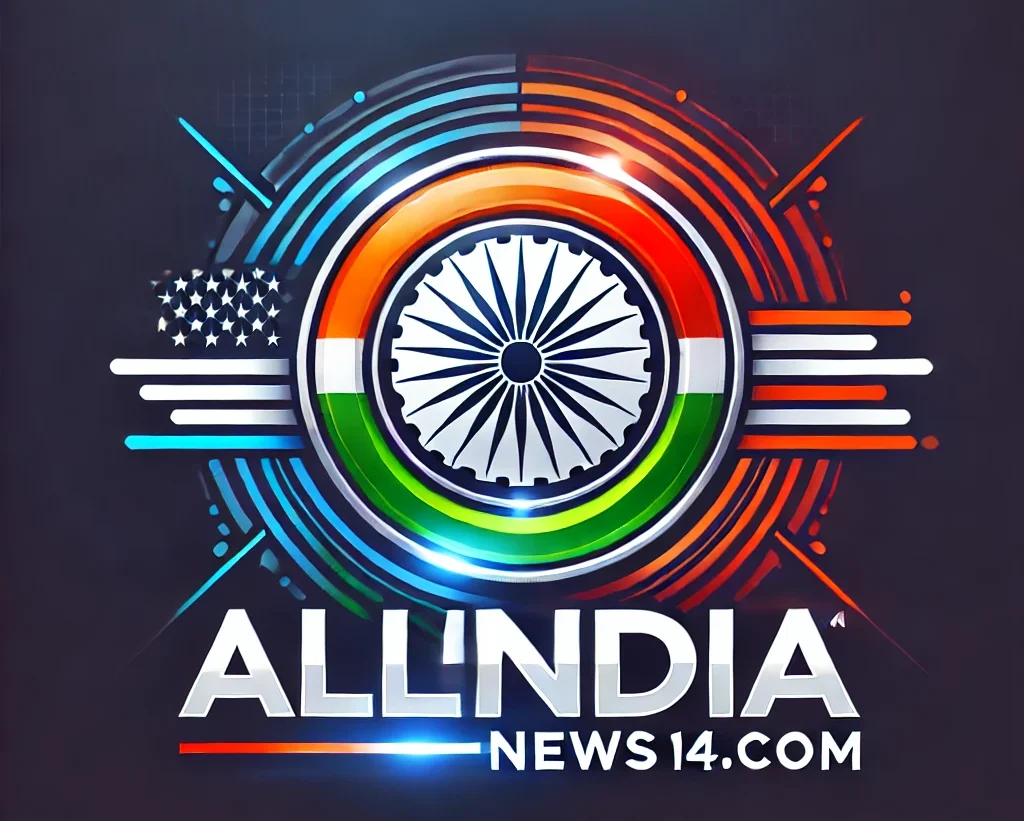PM Modi met Xi Jinping at the SCO Summit 2025 in Tianjin. Talks covered Galwan clash, US tariffs, Russia ties, flights, and the Kailash Mansarovar Yatra.
PM Modi Meets Xi Jinping in Tianjin: Diplomacy Amid Shifting Geopolitical Tides
A Rare Encounter After Seven Years
For the first time in more than seven years, Prime Minister Narendra Modi and Chinese President Xi Jinping met in Tianjin for the 25th Shanghai Cooperation Organisation (SCO) Summit. The meeting was more than just a diplomatic courtesy; it bore the weight of history, residual animosity, and critical global challenges.

The Shadow of Galwan
The memory of the 2020 Galwan Valley fight, in which soldiers from both sides died, continues to linger over India-China ties like an unspoken fact. Every movement, every handshake between the two leaders is fraught with symbolism. For years, disengagement negotiations dragged on with little progress. Suspicion deepened. However, with Washington’s economic pressure on India increasing, Beijing saw a chance to shift antagonism into cautious partnership.
The Global Pressure Cooker
US Tariffs and the Russia Factor
Under Donald Trump’s presidency, the United States levied a 50% tariff on Indian exports, citing India’s close energy ties with Russia. For India, this created a new sense of urgency: to find new economic and political balances. China, reading the situation carefully, made little but substantial moves, reopening direct flights, relaxing visa requirements, and restoring pilgrimage access.
The SCO as a Stage
The SCO is more than just a regional organization; it’s a platform for alternative power centers. With Russian President Vladimir Putin present in Tianjin, the conference served as a symbolic counterweight to Western partnerships. The setting transformed into a theater where Eurasian leaders demonstrated their skills to construct a new order.
Words That Signaled Intent
Modi’s Call for Trust
During his remarks, Modi spoke of “mutual trust, respect, and sensitivity”—principles he said must guide India-China relations. He reminded both sides of their last substantial exchange during the BRICS Summit in Kazan, stressing that the destinies of 2.8 billion people are linked.
Xi’s Poetic Response
President Xi choose symbolism. China and India, two ancient civilizations that must cooperate to lead the Global South, are what he called the Elephant and the Dragon. He spoke in a tone that was both pragmatic and aspirational, showing that he was willing to reevaluate relationships while tackling the issues.
From Hugs to Handshakes
A Minor Change
Previously, Modi’s interactions with international leaders were defined by his characteristic hugs. This time, there was no embrace, just a stiff handshake. Analysts interpreted this as more than etiquette: it was an intentional signal of prudence, progress without overstatement.
Concrete Outcomes
Despite the restraint in body language, the meeting produced real breakthroughs:
The Kailash Mansarovar Yatra is set to resume.
Direct flights between India and China will restart.
Both sides agreed to strengthen border management mechanisms.
The Bigger Picture
Russia’s Presence
Putin’s presence in Tianjin emphasized the urgency of the situation. His attendance demonstrated that the SCO is more than just a symbol; it is becoming a real alternative bloc, a venue for shifting the balance of power away from Western supremacy.
Tianjin as a Symbol
This is the fifth time China has hosted the SCO Summit, and Beijing has used it to demonstrate its leadership. The Meijiang Convention Center was more than just a venue; it served as the stage for delicate gestures, strong speeches, and cautious recalibrations.
Conclusion: A Cautious Reset
In Tianjin, Modi and Xi did not meet as warm friends, nor as bitter rivals. Instead, they acted as meticulous architects of a delicate balance. Their conversation reflected a world in change, marked by tariff wars, shifting alliances, and civilizations redefining their roles in a shattered global order.
The embrace is gone, but the handshake remains. However, behind that single gesture lies the promise of a slow but steady thaw, a balance between rivalry and necessity in an era when economics, politics, and history intersect
